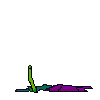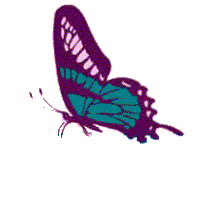|
What
is Achondroplasia?
Many people wonder, "What is Achondroplasia?"
Achondroplasia is one of the most common forms of short limb
dwarfism.
Achondroplasia is a bone growth disorder that affects 1 in
every 15,000 to 40,000 births.
Achondroplasia is called an autosomal dominant condition.
So
What does all that mean?
Well
some one with Achondroplasia, is person who is going to be
fairly small,infact the average adult height in Achondroplasia
is about 4 ft for both men and women. The Life span of a person
in 'normal'and intelligence is also 'normal' Every thing you
may need to know is in the 'indepth section' found on the
left in the menu.
I
hope you find this information helpful and on your travels
around the World wide web,you will come across strange descriptions
and strange sayings, like'disease' this is a condition and
not a disease!! also words like midget are often found.
they
are what they are 'small people' Little people'most of all
they are just like me and you, just smaller.It would be a
strange world if we all looked the same.
Characteristics of Achondroplasia
include
disproportionate short stature, this means the legs and arms
are short compared to the trunk (body) this shortness is more
noticeable in the upper arms and legs (proximal)
Other
signs are a prominent forehead (frontal bossing), a protruding
jaw, flat or even depressed area between the eyes. Occasionally
crowded teeth and upper and lower teeth poorly aligned. Achondroplasia
occurs in all races with equal frequency in males and females
Achondroplasia affects 1 in 25,000 to 1 in 40,000 children.
The legs of a person with Achondroplasia
almost always become bowed., and sometimes the elbows cannot
be straighten completely.
The hands are short and stumpy
and the feet may be short flat and broad.
So what is the cause of Achondroplasia?
A chemical change within
a single gene causes Achondroplasia. It is not caused from
anything the parents have done during pregnancy or before,
the condition has started from a autosomal dominate condition.
What this means is that a new mutation or genetic change has
started during conception. The condition may also be passed
on from one generation to the next; nine out of ten children
born with this condition have average-sized parents. If one
parent has Achondroplasia there is a 50% chance there child
will inherit a single copy of the gene, if both parents have
Achondroplasia there is a 25% chance the child will have a
double dominant gene and a 75% chance of a single Achondroplasia
gene: The gene is called FIBROBLAST GROWTH FACTOR RECEPTOR
(FGFR3)
Related physical/neurological conditions.
Children with this condition
have a tendency towards middle-ear infections this may happen
until five or six years of life, this may be due to abnormal
drainage from the tube that leads from the middle ear to the
throat. Respiratory problems can occur in infants and children,
(due to narrowed nasal passages) A person with Achondroplasia
should have the same life-span as a some one with out the
condition. Hydrocephalus (water on the brain) can also develop
in some cases of Achondroplasia. Children with Achondroplasia
may reach motor milestones of development differently and
more slowly than children without the condition e.g.: the
child with Achondroplasia may take longer to sit up than a
child with out the condition - but there are exceptions.
Don'
forget to join our support group, we have over 400 members,with
answers to all your questions.
Rob
styles
|

